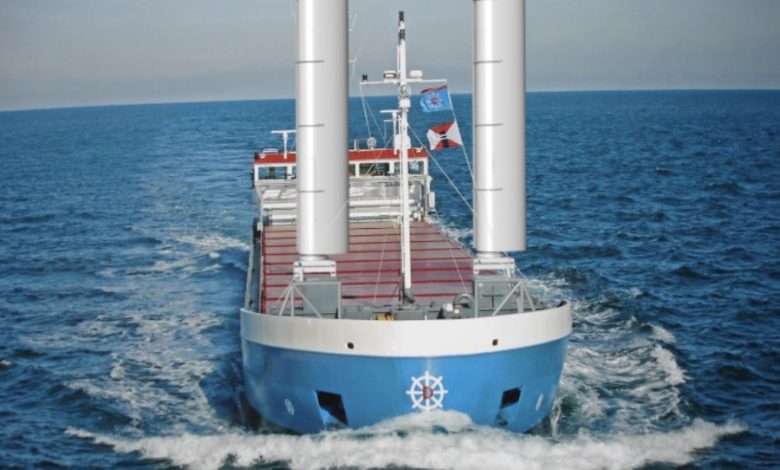Wind-assist technology is ready and waiting for IMO to set tough CO2 rules

Nico van der Kolk from Dutch engineering consultancy Blue WASP hopes wind will be discussed at length as regulators sit down to discuss short term measures to cut shipping’s carbon footprint.
The maritime industry is again facing the broad call for decarbonisation as IMO delegates from over 100 countries meet up – virtually – every day next week, to hammer out a way of enforcing greenhouse gas reduction.
A host of zero-carbon fuels are promised over the next decades, but the short term measures now discussed must ensure that our sector keeps to its remaining 1.5C degrees carbon budget within the next few crucial years of this decade. This means a transparent accounting of the carbon intensity of ship’s operations, enforced from 2023 onwards.
Proper price signals are needed to channel investment into wind-assist
Flag state governments should feel confident adopting these new CO2 regulations. The necessity is by now clear to all, and the technology is ready and waiting to meet the challenge.
Wind-assist ship propulsion (WASP) is a modern, industrialised sailing technology using 21st century materials science and computer modelling. It is as far removed from 18th century sailing ships as today’s Formula 1 cars are from 18th century horse-drawn carts. It deserves an honest appraisal.
Too often sidelined by a prejudiced association with the past (as if 5,000 years proof of concept is a bad thing), today’s modern WASP technology is ready to be retrofitted to existing commercial vessels, promising immediate emissions reduction with double digits.
Several working wind propulsors are already commercially available, and vessels equipped with these mechanical sails are presently operating on both inland and deep-sea routes.
Proper price signals are needed to channel investment into wind-assist, which is today struggling against a historic low oil price and a lack of operational experience with wind-assisted vessels. For the shipowner or operator, this lack of experience stands in the way of early adoption in a rather risk-averse sector. Moreover, for the regulator who wishes to promote the uptake of sustainable technologies, failing to solve this knowledge gap raises the spectre of misdirected policies which do not steer our industry down a cost-optimal energy transition.
By directly utilising free and abundant wind energy for part of the vessel propulsive requirement, wind-assist technologies are unburdened by the complexity of new energy carriers (as for example the effective transportation of hydrogen), or any shore-based infrastructure investments.
Furthermore wind-assist can be integrated with new fuels as they come online, where incidentally the cost and complexity for these future fuels offers a longer-term driver.
Wind-assist as part of a future vessel powering arrangement can absorb a substantial part of the propulsive requirement, meaning the vessel can be designed with a smaller main propulsion system sufficient to achieve the required transit times.
However powerful and abundant, wind is an intermittent energy source, and will need careful integration on-board and with commercial operation of the ship. This will entail a re-alignment of priorities for maritime transport and the markets served. Scheduling arrival times further ahead is already a consequence of slow-steaming over the last decade, and potentially an ongoing trend as the IMO discusses power limitation devices.
A well-designed and operated WASP vessel bears the promise of quicker transit times under this new regulatory climate. This will include active vessel routing based on forecast wind conditions: not just absorbing the variations in weather but amplifying the available wind power for vessel propulsion.
Answering the call for a greening of our sector, a new generation of engineers and entrepreneurs is developing the technical and practical feasibility for several ‘high-lift’ WASP devices and the full integration with vessel trading operation and financing models. As an active member of this growing space, I am excited to work toward 21st century, sustainable maritime transit. It is time to embrace the promise of wind-assist. It’s a compelling short-term intervention alongside the de-powering of fossil-fuelled engines, and going forward, will be an essential part of the power mix for the new zero-carbon fleet.
